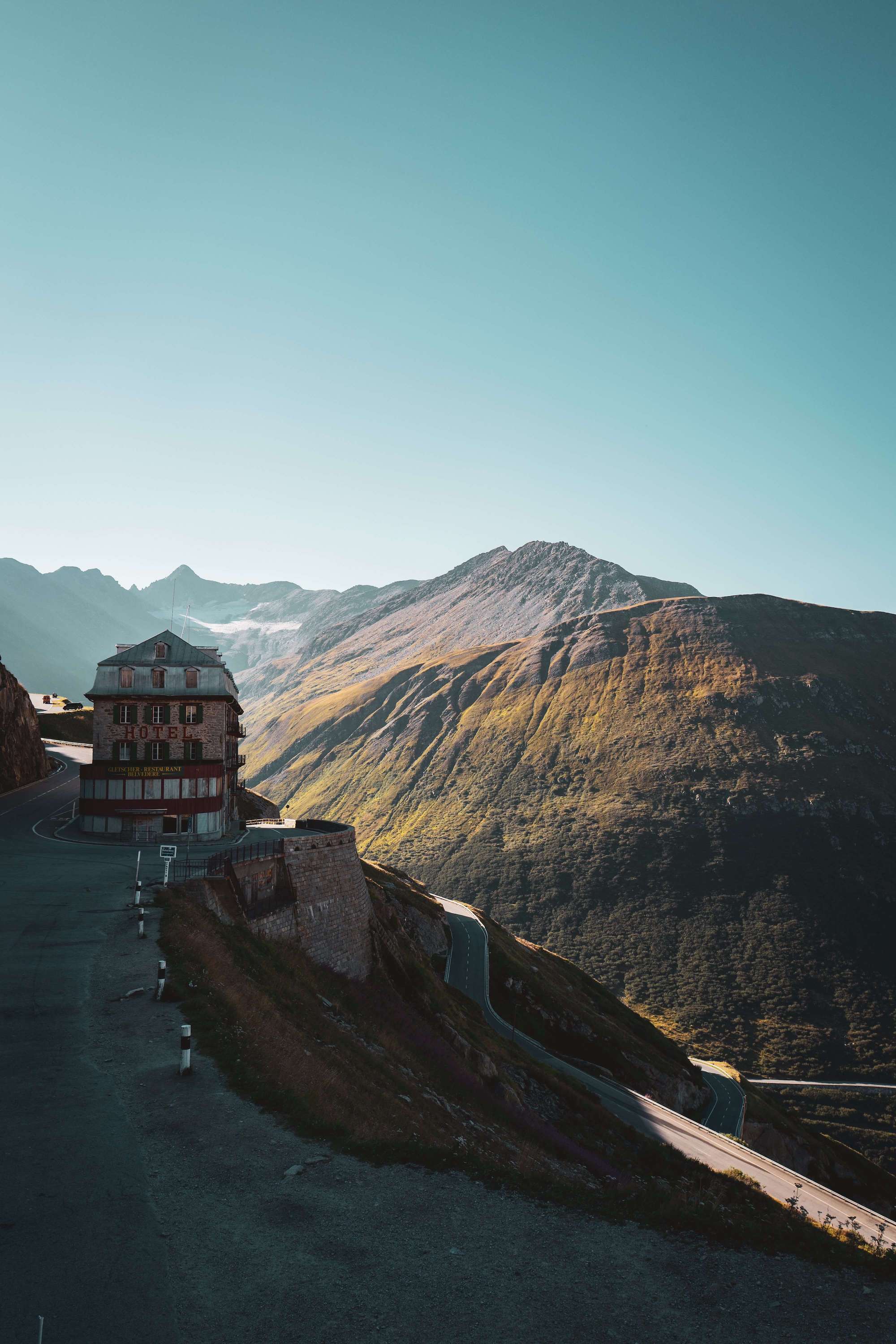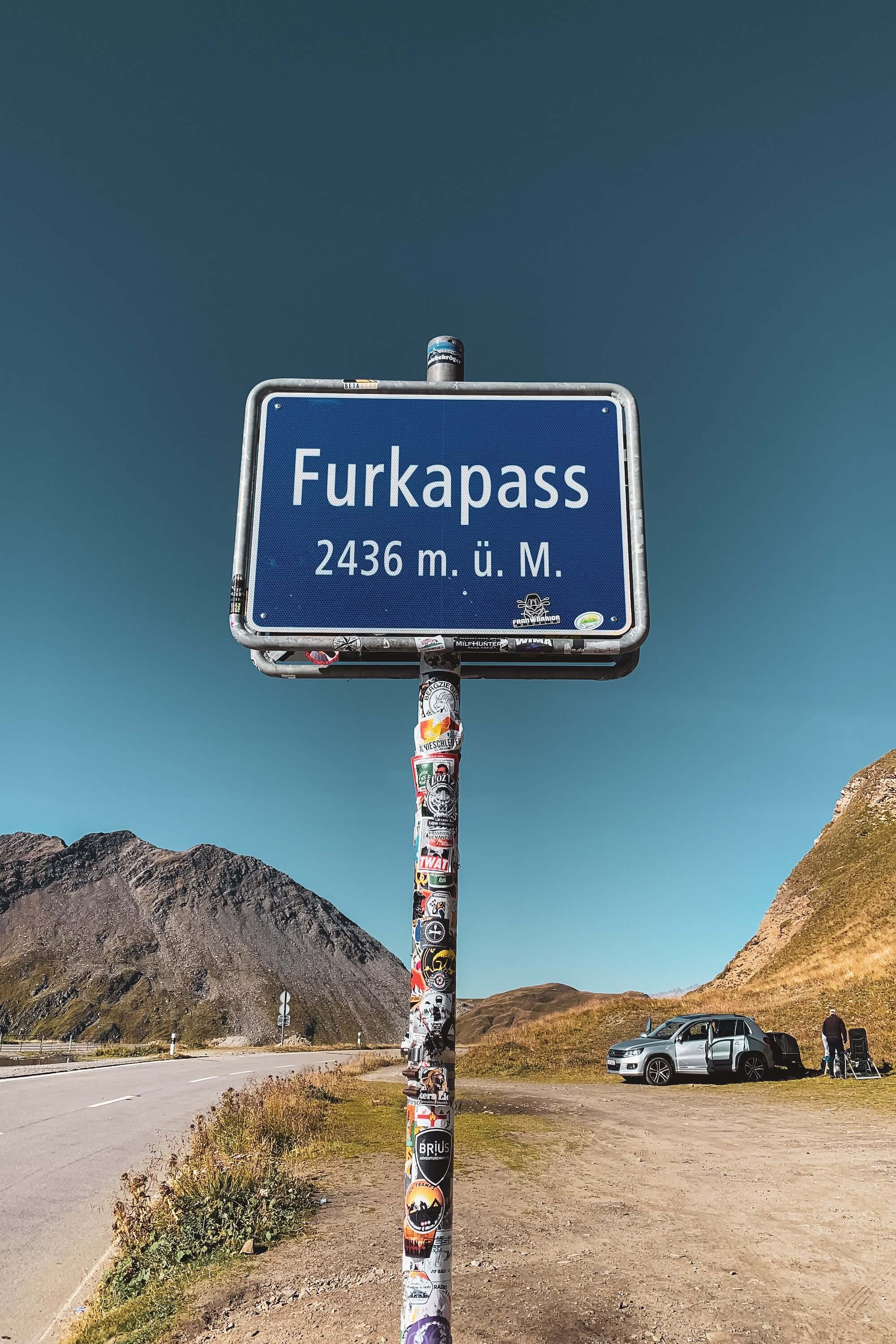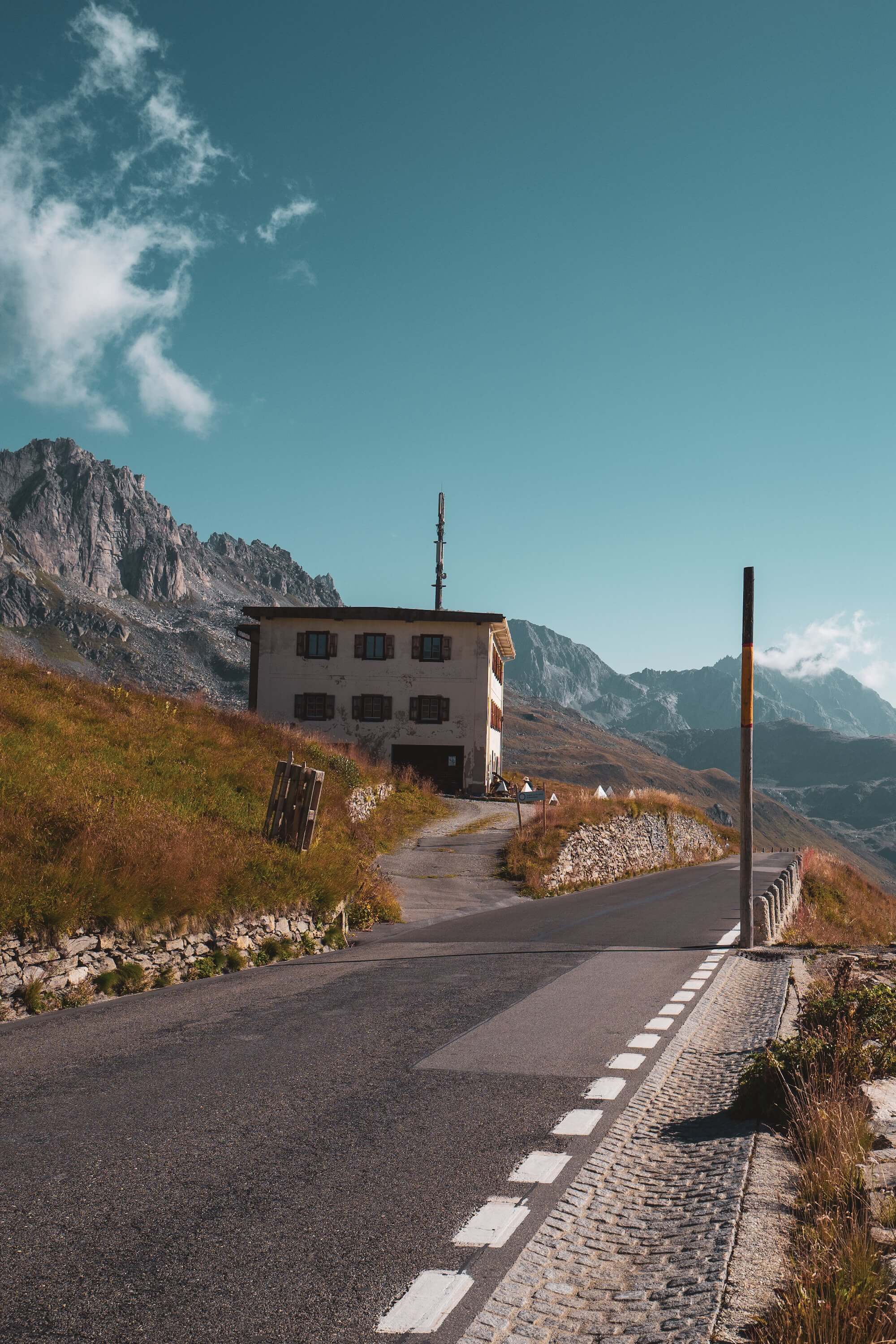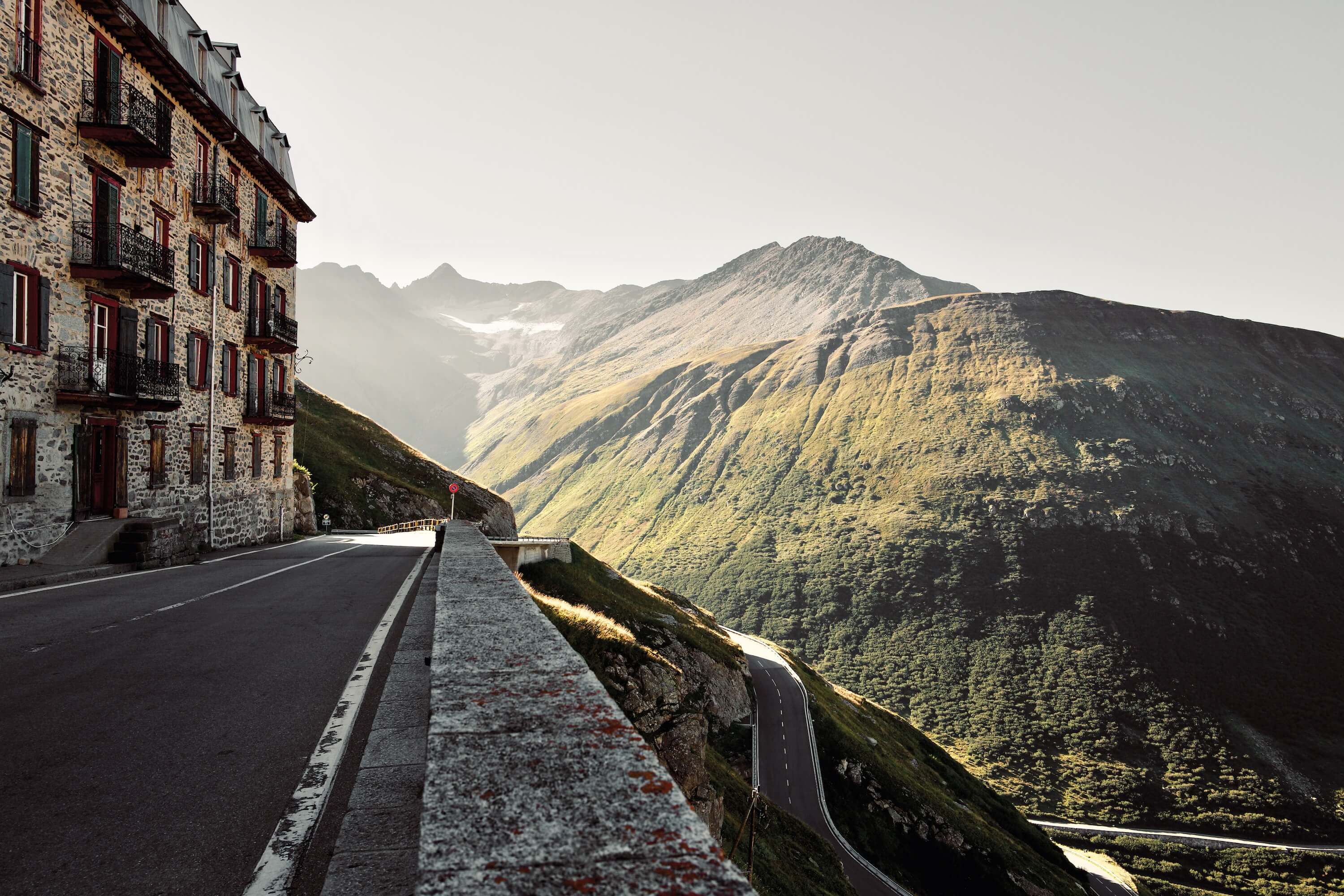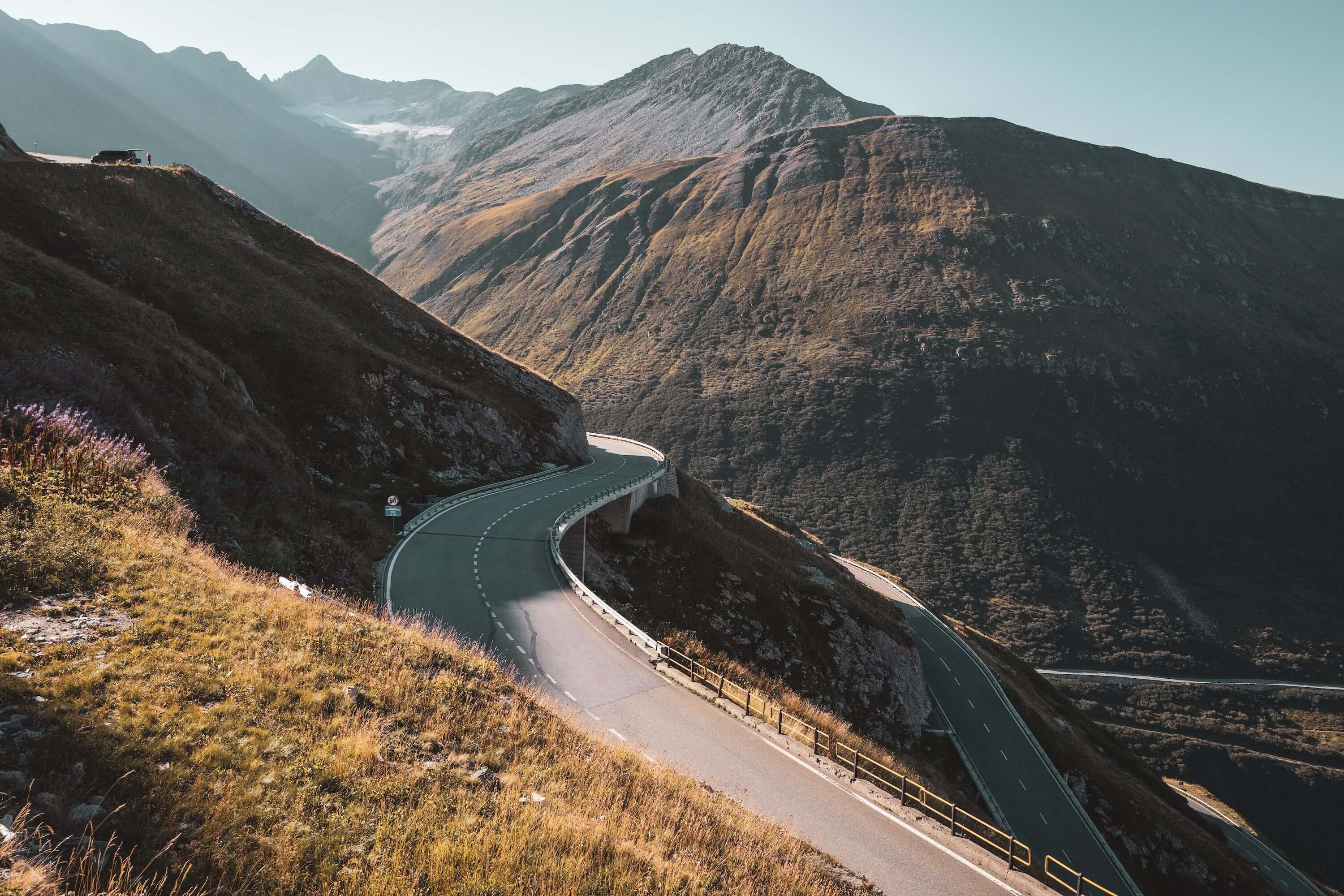The route of the Furka pass was originally partially covered by the Rhône Glacier, which today has receded far out of view of the pass. The Romans were the first to make use the route for trade. The pass was then developed in the 18th century as part of the Swiss National Redoubt - a defensive plan to prevent invasion and whose fortifications can still be found today. The fortifications were further developed to halt a German invasion in World War II.
The 1964 James Bond film Goldfinger featured the pass when the summit road was still gravel. The hairpins on the Realp side were used for a scene where Tilly Masterson tries to shoot Auric Goldfinger. Today a street sign marks the spot - James Bond Strasse. An additional commemorative sign was added in 2020 marking the life of Sean Connery.
The pass is shut in winter due to its height and a tunnel is used to connect the Ursern valley in canton Uri with Goms in canton Valais. Today a lot of the traffic takes the tunnel to avoid the pass leaving tourism as its only purpose.
A long straight road leads you from Andermatt to the start of the Furka pass from the village of Realp. A series of hairpins ascend to the long plateau that takes you to the summit. The plateau has a series of secret and not-so-secret military installations. A classic Swiss stable with colourful doors and windows is Fort Fuchsegg, a machine-gun bunker with a well-executed camouflage. The windows and doors are just painted and cows are not welcome. At the summit, there are three buildings of the former military camp Furkablik, built in 1917 is is now a centre of scientific research and education run by the non-profit organisation, Alpine Research Station. The pass then starts its descent to Gletsch but not before the iconic Belvédère hotel comes into view.
Unseen from this altitude but overlooking the Belvédère is Fort Galenhütten, a gun emplacement, brutal in its construction. From a distance, it appears like another rocky outcrop on the pasture. Across the hairpin from the Belvédère is parking, a cafe and an entrance to an Ice Grotto in the Rhône Glacier. Like most of the Alp's glaciers, climate change is shrinking the Rhône at an alarming rate. Every summer scientists cover the glacier with great white covers to deflect the sun and vainly hope the receding can be slowed. Most don't think it will be here in another century. Unsurprisingly the Ice grotto has to be redone every year. You would think cutting a hole in a receding glacier with one hand while covering it up with another would seem like a contradiction. The glaciers are disappearing and with the advent of tunnels and changing ideas around motoring, some of these passes will eventually be reclaimed by nature. A drive across the Furka pass is a historic and spectacular event.
Hotel Belvédère
Sitting below the summit of the pass, the Hotel Belvédère was built in 1882 by the hotelier Josef Seiler who owned the Grand Hôtels Seiler at Zermatt and Riffelalp. The hotel has been closed since 2015, its decline started before its brief appearance in Goldfinger. The trains brought customers to the hotel in the 1900s but as cars became more reliable and could travel further in a day, fewer people needed to stay on the pass. The Furka base tunnel completed in 1982 put an end to daily use of the pass and was the final nail in the coffin of the hotel. Ironically the abandoned hotel has now become an Instagramable location and car enthusiasts turn up to get a photo with this enigmatic building. The inclusion in books like Atlas Obscura and Accidentally Wes Anderson no doubt help.
